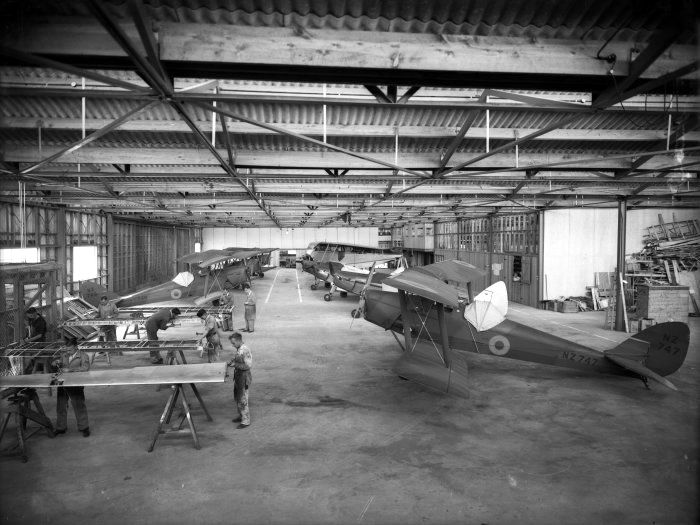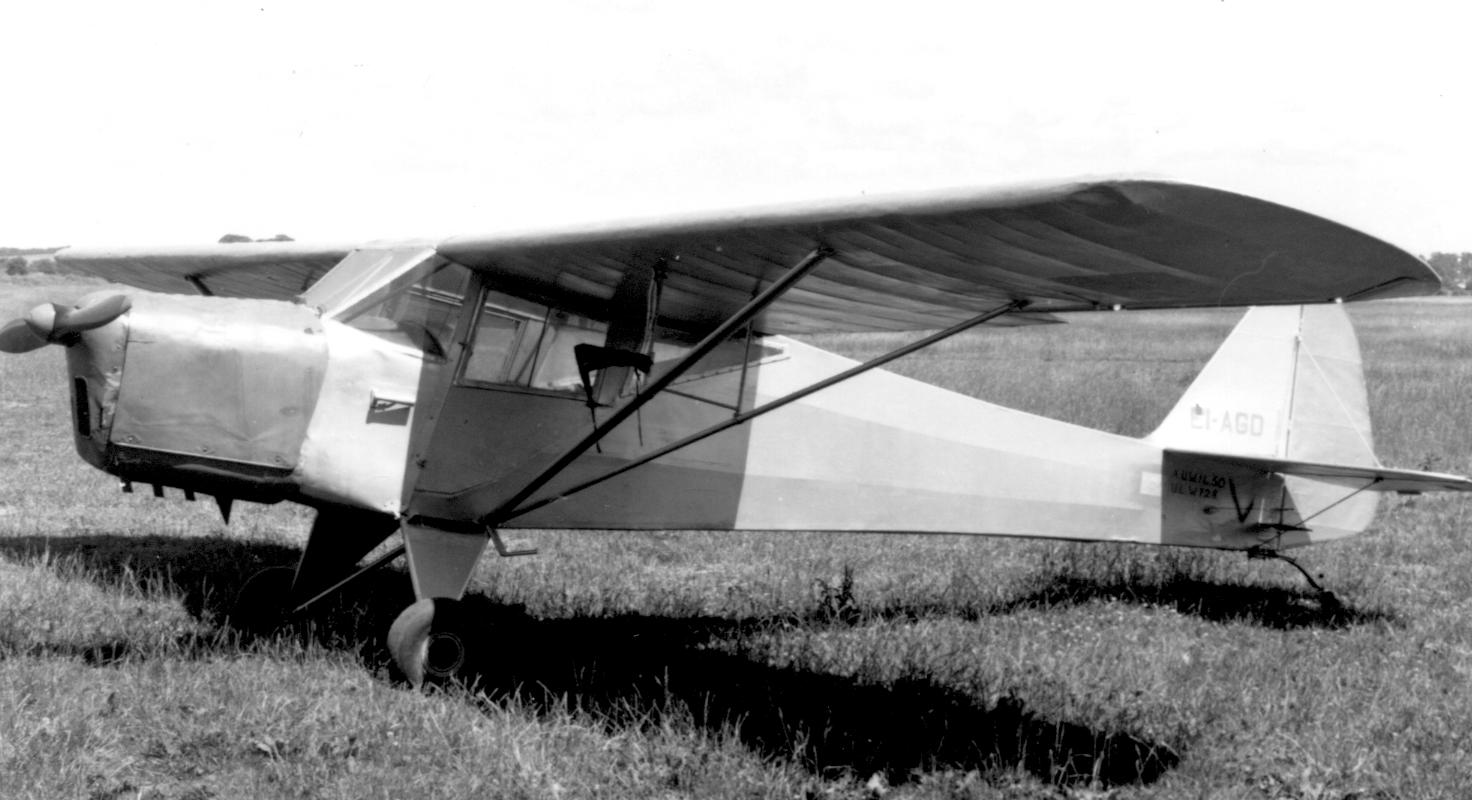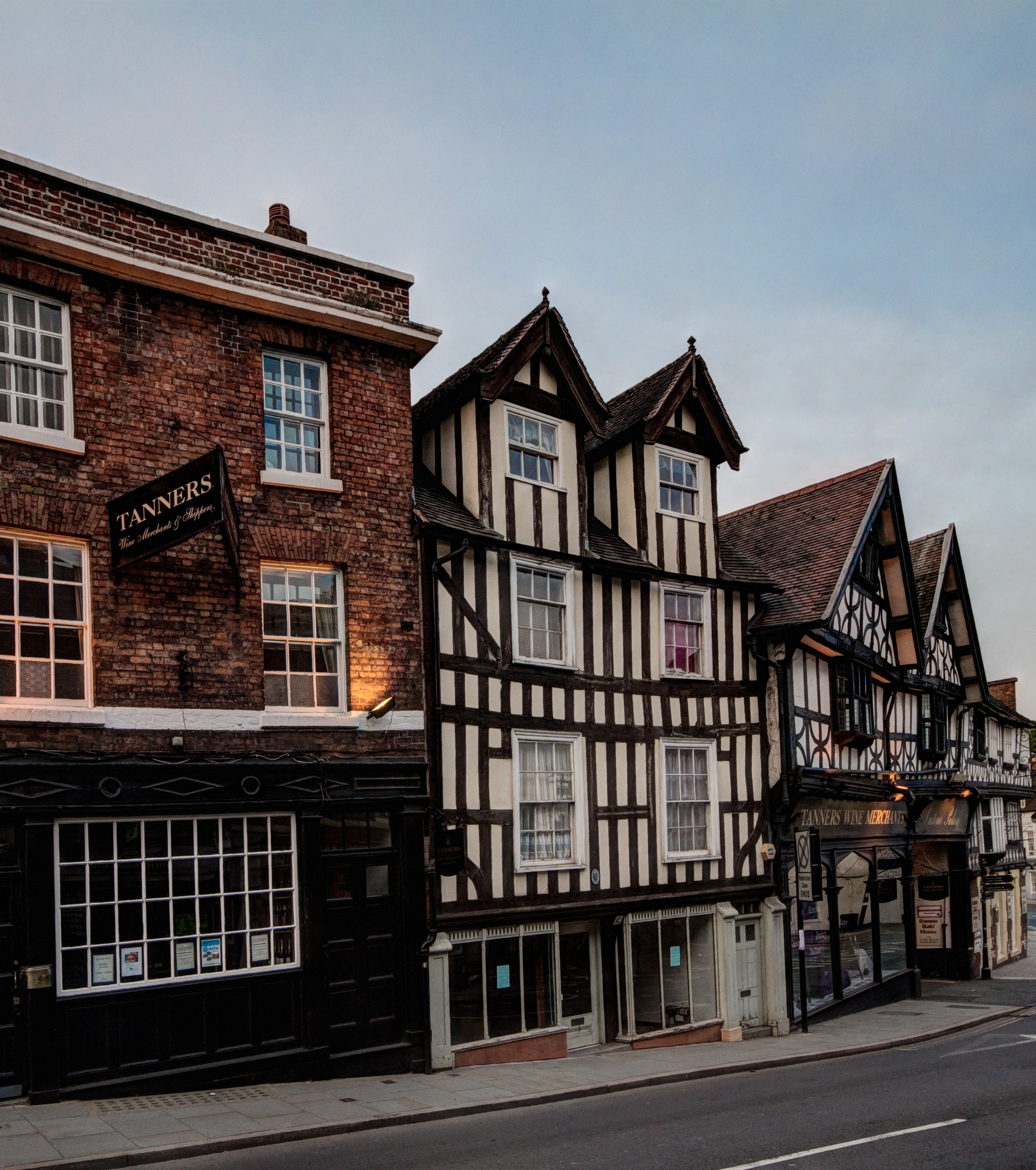|
RAF Westley
RAF Westley is a former Royal Air Force satellite airfield located to the west of Bury St Edmunds, Suffolk, England, between 1938 and 1946. It was established by the Straight Corporation which set up the West Suffolk Aero Club in May 1938, before the airfield was taken over by the RAF Volunteer Reserve. History In 1942 No. 652 AOP Squadron moved in to provide training, using de Havilland Tiger Moths and Taylorcraft Austers. This continued until 1943. The following units were also here at some point: * No. 241 Squadron RAF (April - July 1941) * No. 268 Squadron RAF (September 1940 - April 1941 * No. 656 Squadron RAF (December 1942 - March 1943) * No. 657 Squadron RAF (May - June 1943) * No. 662 Squadron RAF No. 662 Squadron was a Royal Air Force Air Observation Post squadron associated with the 21st Army Group and later part of the Royal Auxiliary Air Force. Numbers 651 to 663 Squadrons of the RAF were Air Observation Post units working closely wit ... (February - Ju ... [...More Info...] [...Related Items...] OR: [Wikipedia] [Google] [Baidu] |
Bury St Edmunds
Bury St Edmunds (), commonly referred to locally as Bury, is a historic market town, market, cathedral town and civil parish in Suffolk, England.OS Explorer map 211: Bury St.Edmunds and Stowmarket Scale: 1:25 000. Publisher:Ordnance Survey – Southampton A2 edition. Publishing Date:2008. Bury St Edmunds Abbey is near the town centre. Bury is the seat of the Diocese of St Edmundsbury and Ipswich of the Church of England, with the episcopal see at St Edmundsbury Cathedral. The town, originally called Beodericsworth, was built on a grid pattern by Abbot Baldwin around 1080. It is known for brewing and malting (Greene King brewery) and for a British Sugar processing factory, where Silver Spoon sugar is produced. The town is the cultural and retail centre for West Suffolk and tourism is a major part of the economy. Etymology The name ''Bury'' is etymologically connected with ''borough'', which has cognates in other Germanic languages such as the German meaning "fortress, castle"; ... [...More Info...] [...Related Items...] OR: [Wikipedia] [Google] [Baidu] |
Suffolk
Suffolk () is a ceremonial county of England in East Anglia. It borders Norfolk to the north, Cambridgeshire to the west and Essex to the south; the North Sea lies to the east. The county town is Ipswich; other important towns include Lowestoft, Bury St Edmunds, Newmarket, and Felixstowe which has one of the largest container ports in Europe. The county is low-lying but can be quite hilly, especially towards the west. It is also known for its extensive farming and has largely arable land with the wetlands of the Broads in the north. The Suffolk Coast & Heaths and Dedham Vale are both nationally designated Areas of Outstanding Natural Beauty. History Administration The Anglo-Saxon settlement of Suffolk, and East Anglia generally, occurred on a large scale, possibly following a period of depopulation by the previous inhabitants, the Romanised descendants of the Iceni. By the fifth century, they had established control of the region. The Anglo-Saxon inhabitant ... [...More Info...] [...Related Items...] OR: [Wikipedia] [Google] [Baidu] |
Air Ministry
The Air Ministry was a department of the Government of the United Kingdom with the responsibility of managing the affairs of the Royal Air Force, that existed from 1918 to 1964. It was under the political authority of the Secretary of State for Air. Organisations before the Air Ministry The Air Committee On 13 April 1912, less than two weeks after the creation of the Royal Flying Corps (which initially consisted of both a naval and a military wing), an Air Committee was established to act as an intermediary between the Admiralty and the War Office in matters relating to aviation. The new Air Committee was composed of representatives of the two war ministries, and although it could make recommendations, it lacked executive authority. The recommendations of the Air Committee had to be ratified by the Admiralty Board and the Imperial General Staff and, in consequence, the Committee was not particularly effective. The increasing separation of army and naval aviation from 1 ... [...More Info...] [...Related Items...] OR: [Wikipedia] [Google] [Baidu] |
Royal Air Force
The Royal Air Force (RAF) is the United Kingdom's air and space force. It was formed towards the end of the First World War on 1 April 1918, becoming the first independent air force in the world, by regrouping the Royal Flying Corps (RFC) and the Royal Naval Air Service (RNAS). Following the Allied victory over the Central Powers in 1918, the RAF emerged as the largest air force in the world at the time. Since its formation, the RAF has taken a significant role in British military history. In particular, it played a large part in the Second World War where it fought its most famous campaign, the Battle of Britain. The RAF's mission is to support the objectives of the British Ministry of Defence (MOD), which are to "provide the capabilities needed to ensure the security and defence of the United Kingdom and overseas territories, including against terrorism; to support the Government's foreign policy objectives particularly in promoting international peace and security". T ... [...More Info...] [...Related Items...] OR: [Wikipedia] [Google] [Baidu] |
RAF Army Cooperation Command
The RAF Army Co-operation Command was a short-lived command of the Royal Air Force during the Second World War, comprising the army cooperation units of the RAF. The command was formed on 1 December 1940 when No. 22 (Army Co-Operation) Group, previously a part of Fighter Command, was raised to command status. Initially it controlled two groups: No. 70 Group RAF for training and No. 71 Group RAF for operations. In August 1941, 71 Group re-organized its squadrons into a Wing basis. Each wing was directly attached to a UK based Army regional Command. Its function was to act as the focus for activities connected with the interaction of the British Army and the RAF, such as close air support, tactical reconnaissance, artillery spotting and training of anti-aircraft defences. It was also responsible for developing tactics for the invasion of Europe, where direct air support proved to be decisive.Delve 1994, p. 100. Army Co-Operation Command proved to be controversial, with the ... [...More Info...] [...Related Items...] OR: [Wikipedia] [Google] [Baidu] |
Straight Corporation
The Straight Corporation Ltd was a significant operator of British airlines, airports and flying clubs from 1935 until the mid 1970s. Its major unit, Western Airways, expanded to become an important parts manufacturer, a maintenance, repair and upgrade organisation, and a builder of transport aircraft. Foundation Whitney Willard Straight was a successful racing driver in the early 1930s, but his American millionaire mother and English step-father, Dorothy and Leonard Elmhirst, were concerned for his safety and sought a less dangerous occupation for him, especially as he was about to marry. At a dinner at their home, Dartington Hall in Devon, they discussed this with William (Bill) Parkhouse, who was the owner of a local auto engineering company, and founder of Haldon Airfield, where Straight had learned to fly a few years earlier. Parkhouse had been concerned that smaller airports, such as Exeter and Torquay, with which he was also involved, and smaller airlines, were too s ... [...More Info...] [...Related Items...] OR: [Wikipedia] [Google] [Baidu] |
RAF Volunteer Reserve
The Royal Air Force Volunteer Reserve (RAFVR) was established in 1936 to support the preparedness of the U.K. Royal Air Force in the event of another war. The Air Ministry intended it to form a supplement to the Royal Auxiliary Air Force (RAuxAF), the active reserve for the RAF, by providing an additional non-active reserve. However during the Second World War the high demand for aircrew absorbed all available RAuxAF personnel and led the RAFVR to quickly become the main pathway of aircrew entry into the RAF. It was initially composed of civilians recruited from neighbourhood reserve flying schools, run by civilian contractors with largely RAF-trained flying instructors as well as other instructors in related air war functions, such as observers and wireless operators. After the war, and with the end of conscription in the early 1960s, the RAFVR considerably reduced in size and most functions were absorbed into the RAuxAF. The RAFVR now forms the working elements of the Universit ... [...More Info...] [...Related Items...] OR: [Wikipedia] [Google] [Baidu] |
De Havilland Tiger Moth
The de Havilland DH.82 Tiger Moth is a 1930s British biplane designed by Geoffrey de Havilland and built by the de Havilland, de Havilland Aircraft Company. It was operated by the Royal Air Force (RAF) and other operators as a primary trainer (aircraft), trainer aircraft. In addition to the type's principal use for ''ab initio'' training, the World War II, Second World War had RAF Tiger Moths operating in other capacities, including Maritime patrol aircraft, maritime surveillance and defensive anti-invasion preparations; some aircraft were even outfitted to function as armed light bombers. The Tiger Moth remained in service with the RAF until it was replaced by the de Havilland Canada DHC-1 Chipmunk, de Havilland Chipmunk during the early 1950s. Many of the military surplus aircraft subsequently entered into civilian operation. Many nations have used the Tiger Moth in both military and civilian applications, and it remains in widespread use as a recreational aircraft. It is ... [...More Info...] [...Related Items...] OR: [Wikipedia] [Google] [Baidu] |
Taylorcraft Auster
The Taylorcraft Auster was a British military liaison and observation aircraft produced by the Taylorcraft Aeroplanes (England) Limited company during the Second World War. Design and development The Auster was a twice-removed development of an American Taylorcraft design of civilian aircraft, the Model A. The Model A had to be redesigned in Britain to meet more stringent Civil Aviation standards and was named the Taylorcraft Plus C.Mondey 1994, p. 71.March 2000, p. 225. After the start of the Second World War, the company developed the model further as an Air Observation Post (AOP)—flown by officers of the Royal Artillery and used for directing artillery fire of British Army Royal Artillery units. The Plus C was re-engined with the Blackburn Cirrus Minor I engine and redesignated the Taylorcraft Plus D. Most of the civil Plus Cs and Ds were impressed into Royal Air Force service, the Plus Cs were re-engined with the Cirrus Minor I and redesignated as Plus C2. Prewar ... [...More Info...] [...Related Items...] OR: [Wikipedia] [Google] [Baidu] |
Westley, Suffolk
Westley is a village and civil parish in the West Suffolk district of Suffolk in eastern England. It is located south of Junction 42 of the A14 providing primary access to adjacent market towns Bury St Edmunds (East) and Newmarket (West). The village consists of two central roads: Fornham Lane and Hill Road running north and south through the parish, with adjoining roads accommodating Westley's total population of 183. Village facilities include: Westley Club, located on Old church Lane and refurbished in 2012 to include pool tables and a community staffed bar, it is the village's only social venue. St Mary's Church, a pioneering concrete structure which features a three-phase tower with (nowadays) a slated pyramidal roof acts as the village's focal point. History Early history The earliest indication of the village's existence derives from 'a document of around 1040'. Westley later appeared in the 1086 Domesday Book under the name 'Westlea' meaning 'westerly wood or cleari ... [...More Info...] [...Related Items...] OR: [Wikipedia] [Google] [Baidu] |
Shrewsbury
Shrewsbury ( , also ) is a market town, civil parish, and the county town of Shropshire, England, on the River Severn, north-west of London; at the 2021 census, it had a population of 76,782. The town's name can be pronounced as either 'Shrowsbury' or 'Shroosbury', the correct pronunciation being a matter of longstanding debate. The town centre has a largely unspoilt medieval street plan and over 660 listed buildings, including several examples of timber framing from the 15th and 16th centuries. Shrewsbury Castle, a red sandstone fortification, and Shrewsbury Abbey, a former Benedictine monastery, were founded in 1074 and 1083 respectively by the Norman Earl of Shrewsbury, Roger de Montgomery. The town is the birthplace of Charles Darwin and is where he spent 27 years of his life. east of the Welsh border, Shrewsbury serves as the commercial centre for Shropshire and mid-Wales, with a retail output of over £299 million per year and light industry and distributi ... [...More Info...] [...Related Items...] OR: [Wikipedia] [Google] [Baidu] |







